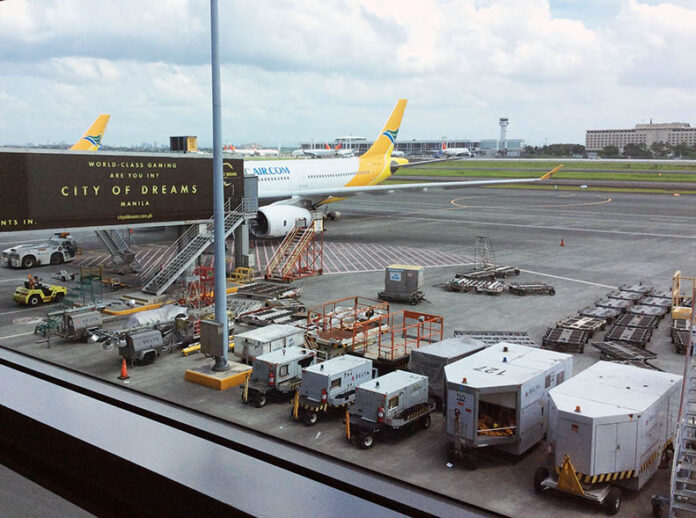-
Airlines on Jan 2 are working toward normalization of Philippine flight operations, following restoration of the Civil Aviation Authority of the Philippines (CAAP) air traffic management system on January 1
-
Philippine Airlines, however, said it will take time to fully restore normal schedules as it repositions aircraft held back or diverted to other airports and adjust flight timings
-
Low-cost carriers Cebu Pacific and AirAsia Philippines said they are working on the normalization of their operations
Philippine air carriers on Jan 2 are working toward normalizing flight operations, disrupted on January 1 by a severe power outage in the Civil Aviation Authority of the Philippines (CAAP) air traffic management system.
Philippine Airlines (PAL) said while flights are beginning to return to normal today, January 2, it will take time to fully restore normal schedules as it repositions aircraft held back or diverted to other airports and adjust flight timings.
In addition to delays caused by these adjustments, PAL said it had to cancel various domestic flights and international flights on January 2.
The airline is operating a number of replacement flights to help carry passengers displaced by cancelled or diverted flights. Domestic replacement flights are from Davao, Cebu, Iloilo, Kalibo, Tagbilaran, Cagayan de Oro and Bacolod to Manila from Butuan to Siargao.
International replacement flights include the following:
- departing January 1 from Vancouver, Los Angeles and San Francisco to Manila
- departing January 2 from Tokyo Narita to Cebu
- departing January 2 from Singapore, Kuala Lumpur, Hong Kong, Osaka, Tokyo Haneda, Tokyo Narita and Nagoya to Manila
- departing January 2 from Manila to Tokyo Narita and Osaka
PAL advised passengers not to proceed to the airport if their flight is cancelled and instead avail of rebooking options, including converting ticket to travel credits; rebooking or rerouting to another flight with available space within 60 days from the original flight in the same booking class or higher within the same cabin class; and refunding ticket without penalties, excluding ticketing service charge.
Low-cost carriers Cebu Pacific and AirAsia Philippines said they are also working on the normalization of their operations. Cebu Pacific had to cancel/adjust additional flights on January 2.
Cebu Pacific also discouraged passengers from going to the airport, advising them to instead monitor their flight status online. The airline said affected passengers have been informed and provided with options (free rebooking, conversion to travel fund or refund).
For flights until 11:59 pm of January 3, 2023, passengers may postpone their travel and avail of free rebooking or travel fund on the Cebu Pacific website.
AirAsia Philippines, meanwhile, is implementing additional flight adjustments through a recovery flight on January 3.
Manila International Airport Authority (MIAA) general manager Cesar Chiong in an online briefing on Jan 1 said they expect full recovery of flights in 72 hours.
Airport authorities have allowed MIAA to operate 24/7 so airlines can mount more flights and night landings. NAIA runways are ordinarily closed from 1:30am to 3:30am.
Chiong said they are also directly coordinating with airlines, requesting them to use more wide-body aircraft to accommodate more passengers.
In a later interview with ANC Rundown, Chiong said NAIA is preparing for 700 flights on Jan 2.
NAIA is “not really fully (operational). Prior to yesterday, we accept about 20 arrivals per hour. Right now, we are only accepting 15 arrivals per hour but there are no limits on the departures,” he said.
From 10am to 4pm on January 1 there were no inbound or outbound flights in Philippine airspace, affecting more than 65,000 passengers.
CAAP’s Air Traffic Management Center (ATMC), which houses the CNS/ATM, went down 9:49 am on January 1 due to a power outage which resulted in the loss of communication, radio, radar, and internet.
The two uninterruptible power supply systems, the navigation system’s primary and secondary sources of power, failed to function. When authorities tried to reconnect to the commercial power grid, a power surge was experienced: the air navigation system only required 220 volts but the commercial network supplied 380 volts.
As of 4 pm on Jan 1, the ATMC resumed partial operations and by 5:50 pm was operating normally even as equipment restoration was still ongoing.





